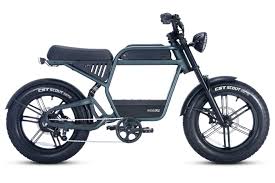
Table of Contents
Toggle1. Definition and Classes of E-Bikes
E-bikes are typically classified based on their power and speed capabilities. In many regions, e-bikes fall into three primary classes:
- Class 1: Pedal-assist only, with a maximum assisted speed of 20 mph (32 km/h). The motor only activates when the rider is pedaling.
- Class 2: Throttle-assisted, with a maximum speed of 20 mph (32 km/h). The motor can provide power even when the rider is not pedaling.
- Class 3: Pedal-assist only, with a maximum assisted speed of 28 mph (45 km/h). These e-bikes are often referred to as “speed pedelecs.”
These classifications help to distinguish e-bikes from mopeds and motorcycles, which are subject to different regulations.
2. Federal and Local Regulations
In many countries, the legality of electric bike on public roads is governed by a combination of federal and local regulations.
United States
In the United States, the Consumer Product Safety Commission (CPSC) defines e-bikes as bicycles with fully operable pedals and an electric motor of less than 750 watts (1 horsepower). According to federal law, e-bikes are subject to the same regulations as traditional bicycles, provided they meet these criteria. However, individual states have the authority to establish their own rules regarding e-bike use on public roads, bike paths, and trails.
European Union
In the European Union, e-bikes that comply with the EN 15194 standard are classified as Electrically Power Assisted Cycles (EPACs). These e-bikes must have a maximum continuous rated power of 250 watts and should only provide assistance up to 25 km/h (15.5 mph). Riders do not require a license or insurance for these e-bikes. However, e-bikes that exceed these specifications are classified as mopeds or motorcycles and are subject to stricter regulations.
Other Regions
Other regions, including Canada, Australia, and Asia, have their own specific regulations governing e-bike use. It is crucial for e-bike riders to familiarize themselves with local laws to ensure compliance.
Requirements for Riding E-Bikes on Public Roads
1. Age Restrictions
Age restrictions for e-bike riders vary by region. In some areas, there are minimum age requirements for operating certain classes of e-bikes. For example, Class 3 electric bike , which can reach higher speeds, may have higher age limits due to safety concerns.
2. Helmet Laws
Helmet requirements for e-bike riders also differ across regions. While some places mandate helmets for all e-bike riders, others may only require them for specific age groups or e-bike classes. Given the higher speeds that some e-bikes can reach, wearing a helmet is always recommended for safety.
3. Licensing and Registration
Most regions do not require a special license or registration for Class 1 and Class 2 e-bikes, as they are treated similarly to traditional bicycles. However, Class 3 e-bikes, which can achieve higher speeds, might require registration, insurance, and a driver’s license, similar to mopeds.
4. Use of Bike Lanes and Paths
E-bike access to bike lanes and paths varies widely. In many regions, Class 1 and Class 2 e-bikes are allowed to use bike lanes and multi-use paths alongside traditional bicycles. Class 3 e-bikes, however, may be restricted to roadways due to their higher speeds. Local municipalities often have specific regulations, so it is essential for riders to check local rules.
Enforcement and Compliance
1. Law Enforcement
Law enforcement agencies play a crucial role in ensuring compliance with e-bike regulations. Riders must be aware of the specific rules in their area to avoid fines or penalties. Common violations include exceeding speed limits, riding without a helmet, or using bike paths where e-bikes are prohibited.
2. Consumer Responsibility
E-bike riders bear the responsibility of understanding and adhering to local laws. This includes staying informed about any changes in regulations and ensuring that their e-bike complies with all legal requirements. Manufacturers and retailers also have a role in educating consumers about the legal aspects of e-bike ownership and use.
Conclusion
Electric bikes are a versatile and sustainable mode of transportation, but their legal status on public roads varies by region. Understanding the classifications, regulations, and requirements for e-bike use is essential for riders to ensure safe and lawful riding. By staying informed and compliant with local laws, e-bike riders can enjoy the benefits of this innovative technology while contributing to safer and more sustainable urban mobility.